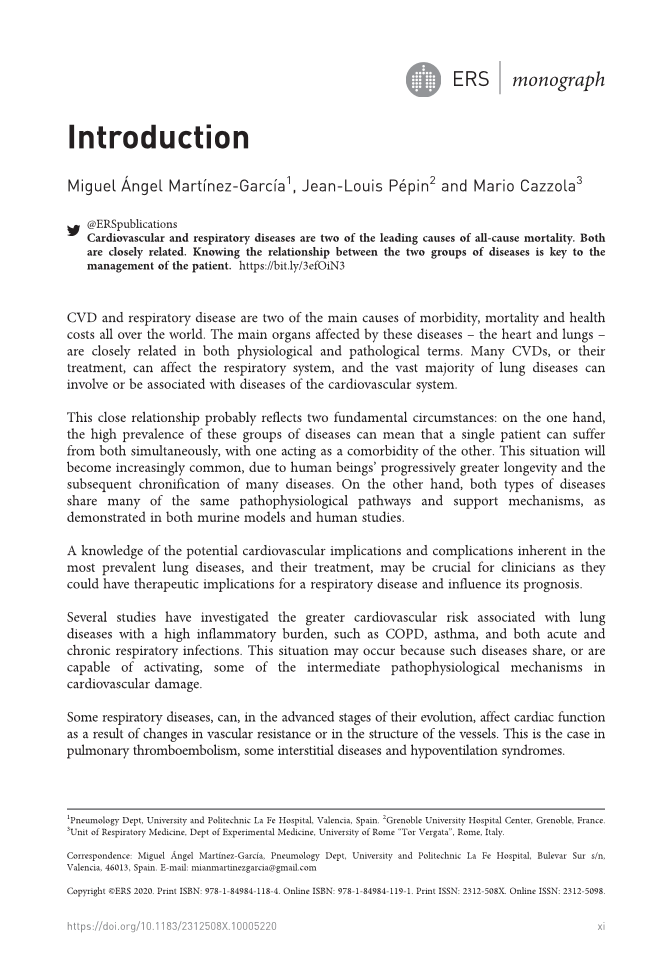ERS | monograph Introduction Miguel Ángel Martínez-García1, Jean-Louis Pépin2 and Mario Cazzola3 @ERSpublications Cardiovascular and respiratory diseases are two of the leading causes of all-cause mortality. Both are closely related. Knowing the relationship between the two groups of diseases is key to the management of the patient. https://bit.ly/3efOiN3 CVD and respiratory disease are two of the main causes of morbidity, mortality and health costs all over the world. The main organs affected by these diseases – the heart and lungs – are closely related in both physiological and pathological terms. Many CVDs, or their treatment, can affect the respiratory system, and the vast majority of lung diseases can involve or be associated with diseases of the cardiovascular system. This close relationship probably reflects two fundamental circumstances: on the one hand, the high prevalence of these groups of diseases can mean that a single patient can suffer from both simultaneously, with one acting as a comorbidity of the other. This situation will become increasingly common, due to human beings’ progressively greater longevity and the subsequent chronification of many diseases. On the other hand, both types of diseases share many of the same pathophysiological pathways and support mechanisms, as demonstrated in both murine models and human studies. A knowledge of the potential cardiovascular implications and complications inherent in the most prevalent lung diseases, and their treatment, may be crucial for clinicians as they could have therapeutic implications for a respiratory disease and influence its prognosis. Several studies have investigated the greater cardiovascular risk associated with lung diseases with a high inflammatory burden, such as COPD, asthma, and both acute and chronic respiratory infections. This situation may occur because such diseases share, or are capable of activating, some of the intermediate pathophysiological mechanisms in cardiovascular damage. Some respiratory diseases, can, in the advanced stages of their evolution, affect cardiac function as a result of changes in vascular resistance or in the structure of the vessels. This is the case in pulmonary thromboembolism, some interstitial diseases and hypoventilation syndromes. Copyright ©ERS 2020. Print ISBN: 978-1-84984-118-4. Online ISBN: 978-1-84984-119-1. Print ISSN: 2312-508X. Online ISSN: 2312-5098. Correspondence: Miguel Ángel Martínez-García, Pneumology Dept, University and Politechnic La Fe Hospital, Bulevar Sur s/n, Valencia, 46013, Spain. E-mail: mianmartinezgarcia@gmail.com 1 Pneumology Dept, University and Politechnic La Fe Hospital, Valencia, Spain. 2 Grenoble University Hospital Center, Grenoble, France. 3 Unit of Respiratory Medicine, Dept of Experimental Medicine, University of Rome “Tor Vergata”, Rome, Italy. https://doi.org/10.1183/2312508X.10005220 xi
